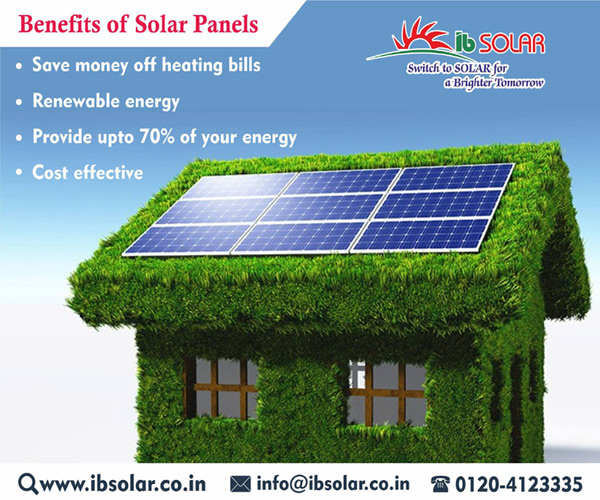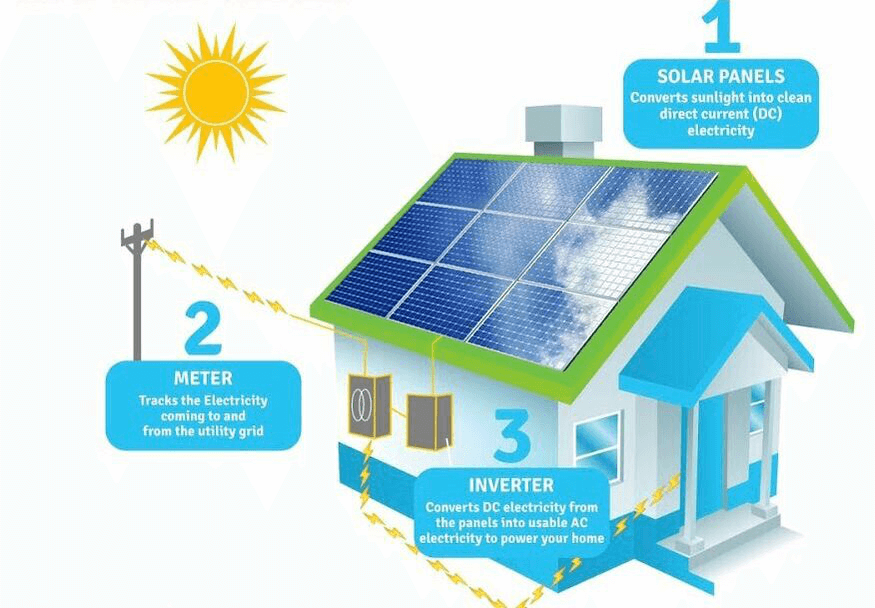Discover Simply Solar Illinois for Affordable Renewable Energy
Discover Simply Solar Illinois for Affordable Renewable Energy
Blog Article
Solar Power 101: A Beginner's Overview to Sustainable Power Solutions
As the world progressively shifts in the direction of lasting power services, understanding the fundamentals of solar power comes to be essential for both people and businesses. By exploring the advantages of solar innovation, alongside the monetary incentives and installation processes, one can get a clearer viewpoint on exactly how to properly integrate this eco-friendly source into their power method.
Recognizing Solar Energy
At its core, comprehending solar power involves realizing the essential concepts of just how sunlight can be transformed into usable power. Solar power is stemmed from the sun's radiation, which can be used with different modern technologies. The key system for this conversion is the photovoltaic result. This phenomenon occurs when sunlight strikes semiconductor materials, usually silicon-based, within solar batteries. The energy from the sunshine excites electrons in the semiconductor, allowing them to flow openly and generate direct current (DC) electricity.

Recognizing solar power also involves identifying its environmental advantages. By making use of sunlight, we can minimize greenhouse gas exhausts and reduce air contamination, adding to a much more sustainable future. The innovations in technology and effectiveness of solar systems remain to enhance their practicality, making solar power a progressively attractive alternative for international energy demands.
Types of Solar Power Systems
Various kinds of solar energy systems are frequently utilized to harness solar energy for power generation. The main classifications include photovoltaic or pv (PV) systems, concentrating solar energy (CSP) systems, and solar thermal systems.
Solar systems make use of solar panels composed of silicon cells that convert sunshine straight into electricity. These systems are flexible and can be installed on roofs, ground mounts, or incorporated into structure products.
Concentrating Solar energy systems, on the other hand, utilize mirrors or lenses to focus sunshine onto a tiny area, creating heat that drives a heavy steam turbine to create electricity - Simply Solar Illinois. CSP systems are usually released in massive nuclear power plant and require direct sunshine, making them much less suitable for over cast regions

Each sort of solar energy system has its distinct characteristics, applications, and viability depending upon geographic location, energy requirements, and spending plan, making it crucial to evaluate choices based on details situations. - Simply Solar Illinois

Advantages of Solar Power
Using solar power with different systems not just supplies a go to website lasting method to generate electrical power but also offers a wide variety of benefits. Among one of the most substantial advantages is the reduction in greenhouse gas emissions, adding to a cleaner atmosphere and combating climate change. Solar power is eco-friendly, indicating it is limitless and available as long as the sunlight radiates, unlike nonrenewable fuel sources, which are finite and diminishing.
Moreover, solar power can cause substantial price financial savings with time. House owners and companies can reduce their power expenses considerably, and oftentimes, they might make credit ratings for excess power created via web metering. Additionally, the solar market creates work, from producing to installation, promoting local economic situations.
Another engaging benefit is energy independence. By creating their own electrical energy, individuals and neighborhoods can reduce reliance on exterior energy resources, boosting durability versus varying power prices and supply interruptions. Solar energy systems need very little maintenance, making them a practical alternative for sustainable energy generation.
Setup Refine Overview
The installation process for solar power systems typically includes a number of vital actions that make certain effective integration right into a home. Originally, an extensive site evaluation is performed to examine the roof covering's orientation, shading, and structural integrity, which are critical to maximizing photovoltaic panel efficiency. Following this assessment, the design stage commences, where a customized solar power system is set up based on the home owner's power requirements and choices.
When the design is completed, the required permits and check my reference authorizations are gotten from regional authorities, making sure conformity with guidelines. The actual installation involves mounting the photovoltaic panels on the roof covering or ground, attaching them to an inverter, and incorporating the system with the property's electric arrangement. This stage may likewise involve installing battery storage space systems, depending upon the design.
With the installation full, the solar energy system can start producing eco-friendly energy, adding to sustainability and reducing utility prices. This structured technique ensures that solar systems are both efficient and dependable, maximizing their long-lasting advantages.
Financial Incentives and Cost Savings
Discovering the economic motivations and financial savings connected with solar power systems can significantly boost the allure of making the switch to eco-friendly energy. Different rewards exist at federal, state, and neighborhood levels, developed to minimize the preliminary costs connected with solar setup. Among the most significant motivations is the federal solar tax credit report, which enables homeowners to subtract a portion of their solar system installment expenses from their government tax obligations. Since 2023, this credit stands at 30%, providing significant savings.
In enhancement to tax obligation credit reports, lots of states use refunds that can even more decrease upfront expenses. Some energy business also provide performance-based motivations, fulfilling solar power manufacturing over time. Funding choices, such as solar finances and leases, enable consumers to mount systems with little to no down repayment, making solar power much more accessible.

Furthermore, solar systems can increase home worths, giving a solid return on financial investment. In general, the combination of incentives and cost savings makes solar energy an economically eye-catching selection for many families.
Verdict
Finally, solar energy represents a crucial element of sustainable energy services, providing a pathway towards lowered carbon footprints and improved environmental defense. The varied sorts of solar power systems, paired with substantial financial incentives, promote his response wider adoption amongst individuals and neighborhoods. Comprehending the setup procedures and benefits related to solar power empowers stakeholders to make enlightened choices. Eventually, the transition to solar energy not just fosters eco-friendly duty but also promotes financial cost savings and power self-reliance.
Report this page